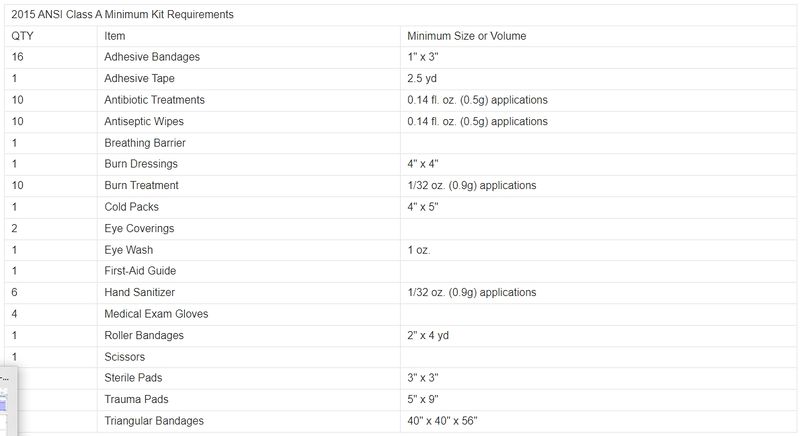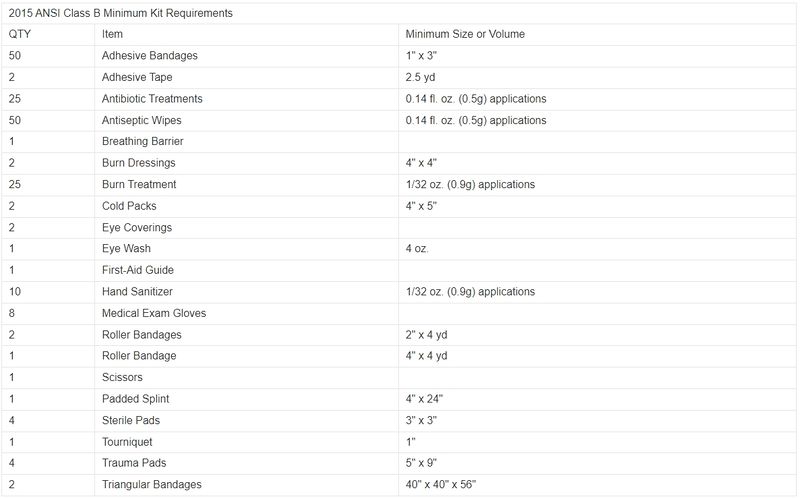First aid kits
A first aid kit is a collection of supplies and equipment that is used to give medical treatment. There is a wide variation in the contents of first aid kits based on the knowledge and experience of those putting it together, the differing first aid requirements of the area where it may be used, and variations in legislation or regulation in a given area.
The international standard for first aid kits is that they should be identified with the ISO graphical symbol for first aid (from ISO 7010) which is an equal white cross on a green background.
First Aid Kit can be assembled in almost any type of container, and this will depend on whether they are commercially produced or assembled by an individual. Standard kits often come in durable plastic boxes, fabric pouches, or in wall-mounted cabinets. The type of container will vary depending on the purpose, and they range in size from wallet-sized through to a large box.
It is recommended that all kits be in a clean, waterproof container to keep the contents safe and aseptic. Kits should also be checked regularly and restocked if any items are damaged or are out of date.
Appearance
The International Organization for Standardization (ISO) sets a standard for first aid kits of being green, with a white cross, in order to make them easily recognizable to anyone requiring first aid.
The ISO only endorses the use of the green background and white cross, and this has been adopted as a standard across many countries and regions, including the entire EU. First aid kits are sometimes marked (by an individual or organization) with a red cross on white background, but the use of this symbol by anyone but the International Committee of the Red Cross (ICRC) or associated agency is illegal under the terms of the First Geneva Convention, which designates the red cross as a protected symbol in all countries signatory to it. One of the few exceptions is in North America, where despite the passing of the First Geneva convention in 1864, and its ratification in the United States in 1881, Johnson & Johnson has used the red cross as a mark on its products since 1887 and registered the symbol as a U.S. trademark for medicinal and surgical plasters in 1905.
Some first aid kits may also feature the Star of Life, normally associated with emergency medical services, but which are also used to indicate that the service using it can offer an appropriate point of care. Though not supported by the ISO, a white cross on a red background is also widely recognized as a first aid symbol. However, for very small medical institutions and domestic purposes, the white cross on a plain green background is preferred.
Contents
It is an OSHA requirement that all businesses have first-aid kits available. OSHA does not require that specific items be included in each first-aid kit, only that each kit has adequate supplies. OSHA recommends, but does not require, that each kit meets ANSI standards
Within the American National Standard for workplace first-aid kits and supplies, specifically ANSI Z308.1-2015, kits are categorized as Class A or Class B. Class A kits include items necessary to treat the most common workplace injuries. Class B kits are used to treat more complex injuries or used in high-risk environments. Class B kits have a broader variety of supplies.
| "First Aid Class A contents" |
|---|
| "First Aid Class B contents" |
|---|
- More information is available at [ Wikipedia:First_aid_kits ]
Chat rooms • What links here • Copyright info • Contact information • Category:Root

